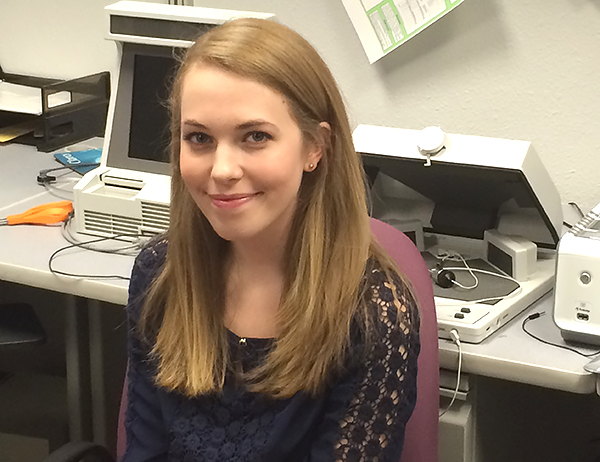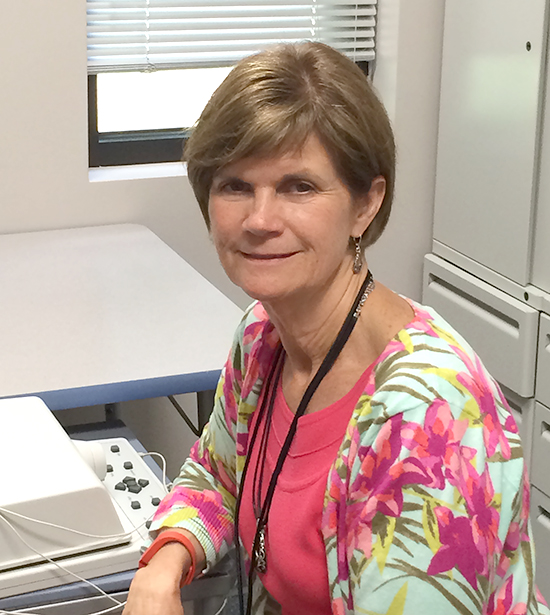
“The things that I see the students and the participants accomplish are different than anything you can learn in the classroom from your professor. It’s just real life,” said doctoral student Sarah Wallace, who has participated at three Summer Intensive Auditory Rehabilitation Conferences.
UT Dallas speech pathologists and audiologists came together recently to teach coping strategies to people with hearing loss and give graduate students an opportunity to learn.
The five-day Summer Intensive Auditory Rehabilitation Conference (SIARC) provided audiology and speech-language pathology graduate students with hands-on learning in diagnostics, hearing aids, hearing-assistive technologies, communication strategies and coping skills. The students responded to the participants’ needs and worked with them to find appropriate solutions.
According to the National Institute of Deafness and Other Communication Disorders, an estimated 36 million American adults have hearing loss, but only 1 out of 5 people who need hearing aids actually use them.
“I think one of the main reasons people don’t purchase hearing aids is because they don’t have an opportunity to experience the full benefits the technology can offer,” said Dr. Linda Thibodeau, SIARC director and a professor at the School of Behavioral and Brain Sciences. “When people are fit with hearing aids in a one-hour appointment, they may not learn how to combine the amplification benefits with other communication strategies.”
Even when people get hearing aids, unrealistic expectations or a lack of training in using the devices can cause disillusionment and rejection.

Dr. Linda Thibodeau
Thibodeau said there are generally three kinds of hearing aids: behind-the-ear, in-the-ear and in-the-drawer. SIARC aims to get the hearing aids out of the drawers and back into use.
Thibodeau said without a comprehensive rehabilitative program hearing aids will most likely end up in the drawer — an outcome the students work to alleviate.
In the classes, participants received personal hearing checks and a complete audiological evaluation. They also created strategies to improve listening and communication, learned to advocate for themselves in public spaces and in their own medical care, practiced speech reading techniques and became familiar with hearing-assistive technologies.
“It’s one of the most gratifying and edifying experiences of my academic career,” said Sarah Wallace, a doctor of audiology student at the Callier Center for Communication Disorders and three-time SIARC participant. “The things that I see the students and the participants accomplish are different than anything you can learn in the classroom from your professor. It’s just real life.”
Hearing-assistive technologies are devices that improve communication with a hearing-impaired person, such as a microphone that connects wirelessly to a hearing aid. When used in settings with lots of background noise, such as a restaurant, the devices can make the difference in being heard.
Along with Thibodeau, Drs. Carol Cokely and Lee Wilson, faculty in the School of Behavioral and Brain Sciences, have worked to expand the conference’s offerings since the first gathering in 2001. Since then, there have been 12 conferences in four cities, always in partnership with a university. About 200 people with hearing impairments and 150 students have benefited from the conference teachings.
“We’ve had people come in apprehensive and unsure about what the week is going to be, and they’re the ones who are singing the highest accolades about how much they’ve learned and how they want to come back again,” Wallace said.
Participants praised the conference in their reviews.
“For the first time in almost 30 years … (my husband) could hear birds singing and gravel crunching under his feet,” one participant wrote. “A whole new palette of sounds, of the richness of the world is now available to him. Your team plus the excellent efforts of our assigned student have made all this possible.”